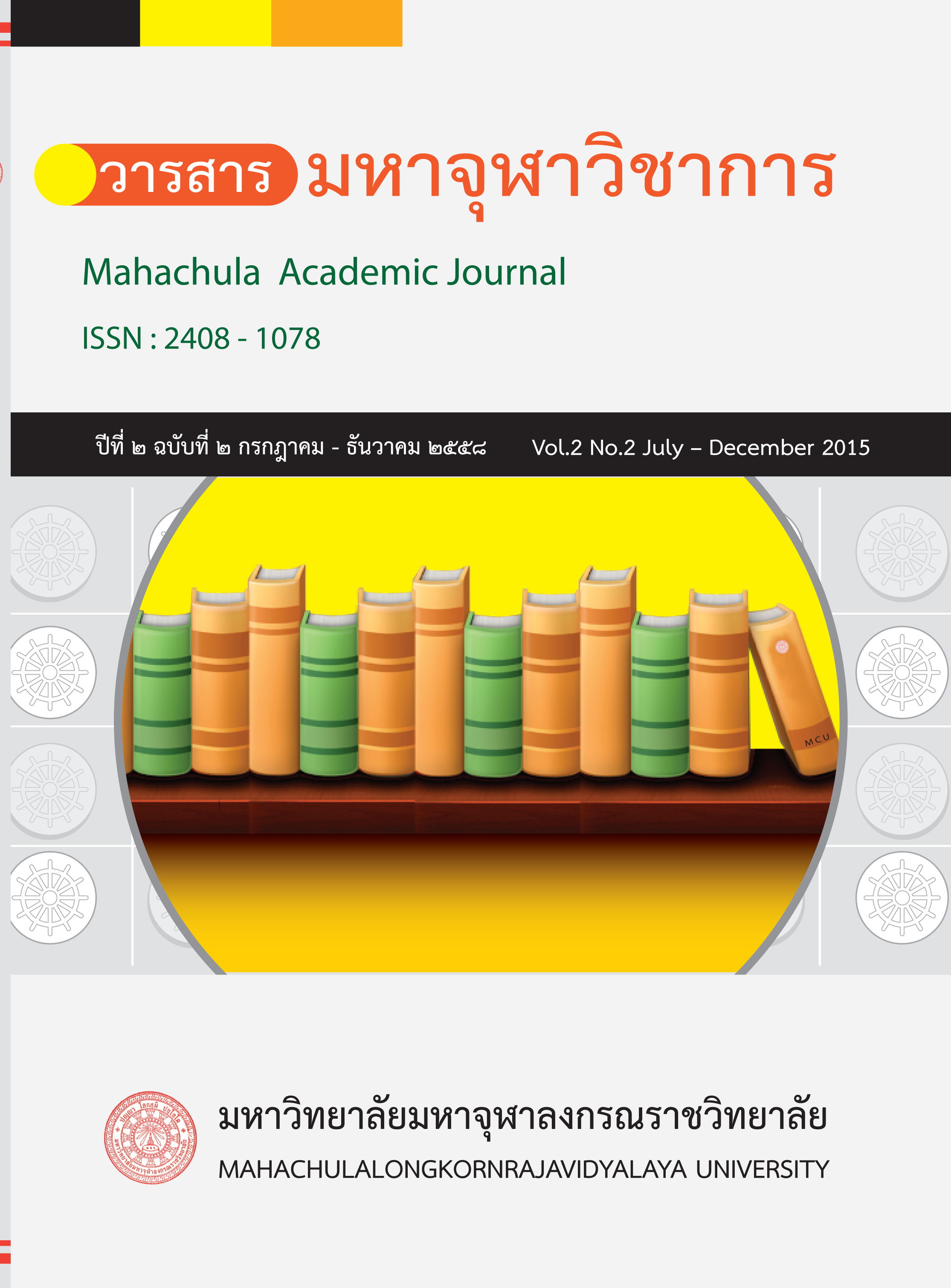Buddhist Approach to Human Capital Development in the Age of Globalization : Model & Pratice Approach
Main Article Content
Abstract
Buddhist principle of human capital development by nature consists of the driving force for human capital to work with effectiveness and efficiency. The main Buddhist principle consist of 4, Thinking, Understanding and Knowledge in 4 basic Development , TRISIKA, 7 Qualities of a good man ,6 characteristic behaviors 6 and the Forth Lotus. As for the principle of human capital development and the impact of the age of globalization upon the human capital development Buddhism experience the development process related to the contexts and dimensions of economic, social, political and technological development. The impact of globalization had been journal to be inevitably on private, public, religious and educational sections. The general administration must correspond to the mechanisms of the systems theory. The change agent of human capital must work out the plan to develop human capital in terms of Buddhist principle at 2 levels: organizational and individual. The Buddhist method of human capital development of the age of globalization can be approached at 2 perspectives; 1) The paradigm of development of a worldly level proceeded by the principle “ITUK” intelligence awareness, thinking, understanding and knowledge and 2) The paradigm of development at a super mundane level. The Buddhist approach to human capital development aims of training the individual to be good in knowledge and good in behavior. It is also carried out in order to meet the path of the noble life with true knowledge of the fact and process into a better domain. The concepts of LETS are the outcome of the research synthesis: Learning, Experience, Training and Seminar, those showed are applied as the alternative technique of developing the human capital for a better quality and efficiency in work performance.
Article Details
References
เกรียงศักดิ์ เขียวยิ่ง. การบริหารทรัพยากรมนุษย์และบุคคล. ภาควิชาสังคมศาสตร์ คณะมนุษย์ศาสตร์และสังคมศาสตร์ มหาวิทยาลัยขอนแก่น, ๒๕๓๙.
มหาจุฬาลงกรณราชวิทยาลัย. พระไตรปิฎกภาษาไทย ฉบับมหาจุฬาลงกรณราชวิทยาลัย เฉลิมพระเกียรติสมเด็จพระนางเจ้าสิริกิติ์พระบรมราชินีนาถ. กรุงเทพมหานคร: โรงพิมพ์มหาจุฬาลงกรณราชวิทยาลัย, ๒๕๓๙.
มหาวิทยาลัยมหาจุฬาลงกรณราชวิทยาลัย. พระไตรปิฎกภาษาบาลีฉบับมหาจุฬาเตปิฏกํ ๒๕๐๐. กรุงเทพมหานคร: โรงพิมพ์มหาจุฬาลงกรณราชวิทยาลัย, ๒๕๓๕.
สมพงษ์ เกษมสิน. การบริหารงานบุคคลแผนใหม่. พิมพ์ครั้งที่ ๕. กรุงเทพมหานคร: ไทยวัฒนพานิช, ๒๕๒๖.
สำนักงานพัฒนาและวิจัยระบบงานบุคคล สำนักงานข้าราชการพลเรือน. ทุนมนุษย์กับการพัฒนาสมรรถนะการบริหารทรัพยากรบุคคล. กรุงเทพมหานคร: บริษัท พี.เอ. ลีฟวิ่ง จำกัด, ๒๕๔๗.
อุทัย หิรัญโต. หลักการบริหารงานบุคคล. กรุงเทพมหานคร: ไทยวัฒนาพานิช, ๒๕๓๗.


